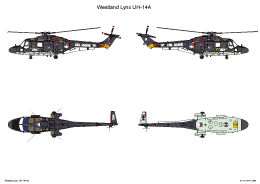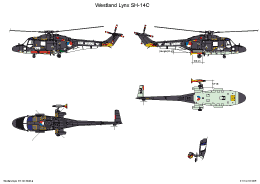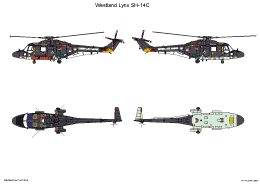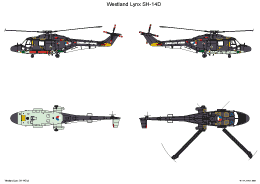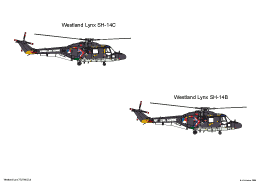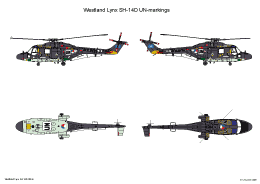Upon delivery, the Dutch Lynx was in the usual colours Extra Dark Sea Grey over Sky.
Early eighties there was (in the Netherlands) much discussion about the colour Extra Dark Sea Grey. The MIP No. 1 of 1984 (an IPMS Netherlands release) stated that this would be Humbrol Authentic Colour HB-7.
I added this on my first (and thus far only) Lynx model. But at that time I was training at the NAM gas treatment facilities in Den Helder; Naval Air station De Kooy was situated just on the other side of the canal. I saw the Lynx passing by every day and saw immediately saw that HB-7 was far too light and too grey.
The aircraft were much darker and had also a sort of bluish grey applied. Our fellow modellers of the NVM had a similar discussion at that time, about the colours of the Dutch Lockheed P3-C Orion. An naval employee compared the used colour with different Humbrol paints and concluded Humbrol HF-5, Blue Gris Clair Foncé, was the best match.
This colour I applied to my model and I still think the result much more realistic. As the Humbrol Authentic series is discontinued for many years, a good replacement would be Humbrol 79, matt Blue Gray, according to Humbrol. Because of adding a protective varnish to your model, the taint might become somewhat darker. If one wishes you first mix the colour paint with some white, there are some description related to the scale of your model.
The rotor Head is grey. Main and tail rotor blades are olive green (BS831C 641 = Sikkens 46056); tips of the original blades were yellow. Also two yellow stripes had been added to the main rotor blades. The tips of the tail rotor blades are bright red, white and bright red.
The BERP blades have a different colour, merely grey-green. Alas I don't have any information about this colour.
Further the SH-14D is sprayed with a more greyish colour than the original Lynx, though officially the colour should be exactly the same. (perhaps a protective varnish was used which caused the somewhat blueish tint of the original machines).
The chairs are grey. cushion are orange, blue seat belts an often a yellow coat on the seat. The bucket seat has a grey frame with blue seats and seat belts. The frame of the sonar installation is also light grey.
| Scheme | Colour name | FS-number | BS-number | Humbrol | XtraColor | Vallejo ModelColor | Vallejo ModelAir | Hataka | |
|---|---|---|---|---|---|---|---|---|---|
| Standard #1 | Uppersides | Extra Dark Sea Grey | ~6099 | BS:640 | 123 / 106 | X-5 / X-376 | 70.866 | 71.110 | ~140 |
| Undersides | Sky | - | BS:210 | 90 | X004 / X130 | - | 71.302 | ~026 | |
| Rotor blades | Dark green | - | BS:641 | 163 | X001 | 70892 | 71.013 | ~143 | |
Check www.paint4models.com for an extensive conversion table with lots of colour and paint systems.
Serial overview
Initially the serial was applied with large white lettering on the cabin door and , accompanied with the type designation on the tail in a smaller type of lettering.
Mid eighties the position and size of the serials was changed. The serial was moved to a position just n the fuselage in front of the cabin door.
Several years later the roundel was reduced in size to about two-third of the original size, the type designation and serial were moved from tail to a position next to the roundel on the fuselage and the serial on the nose was also reduced in sized an restricted to the last two digits. Also the serial was removed from the horizontal tail and the designation Kon. Marine on the tail boom was replaced with Koninklijke Marine.
Initially the type designation was applied in black, by this caused many problems with reading on the platforms aboard the ships, so soon the colour was changed to white again.
Tail codes
Until early nineties the Lynxes had also a white code on the tail. This code varied and depended on the location where the Lynx was bases, e.g. K was for air base De Kooy; KN meant M-frigate Kortenaer.
The Lynx stationed aboard a ship often had some kind of cartoons applied on the nose. This nose art were related to the Technical Squadrons, which maintained the Lynx. In case the individual Lynx was stationed to another ship, the nose cone was replaced. later this was strictly forbidden and the art was added to the sliding cabin doors, which could be easily changed. Check your references if your want to add some of this art to your scale model.
A nice photo of a Dutch UN Lynx can be found here.

